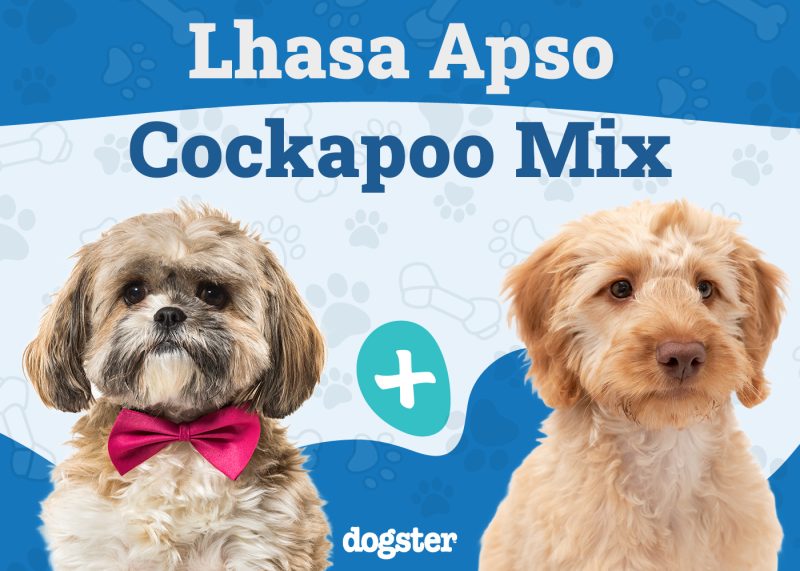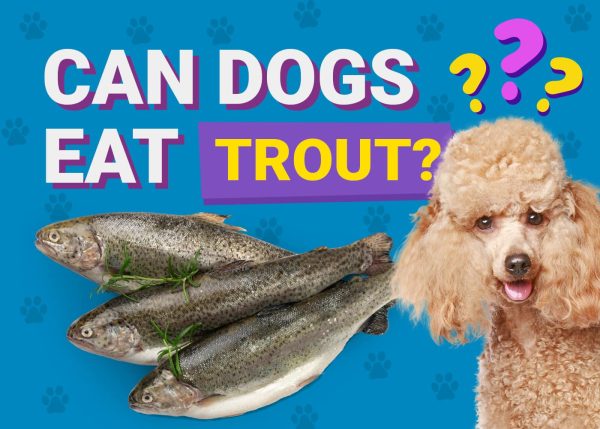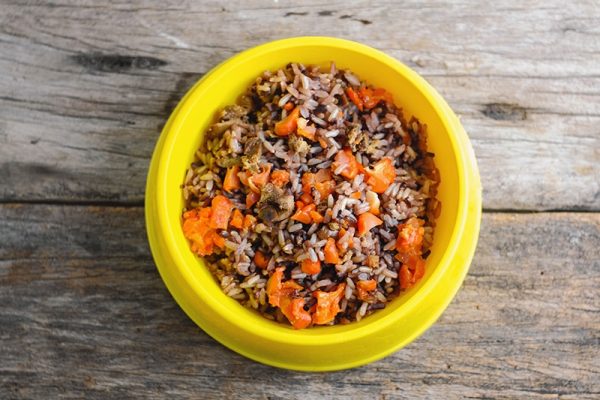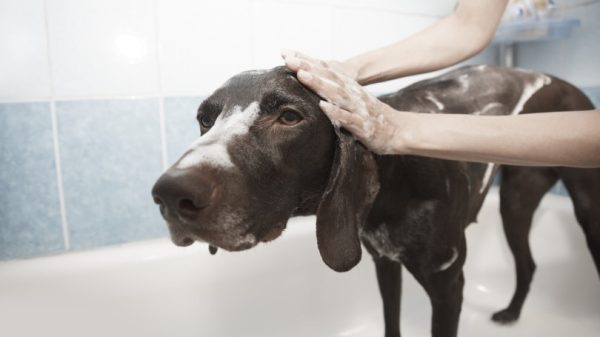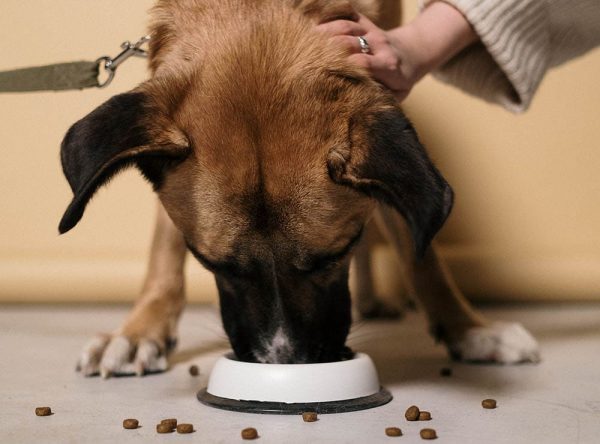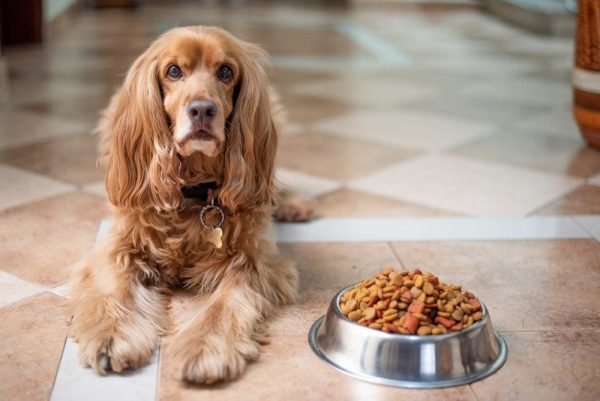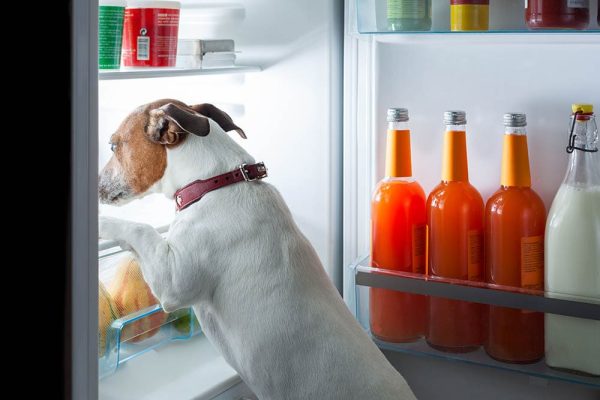In this article
View 3 More +Every time you turn, your dog is into something different. Maybe last week, they were ripping up the trim on your baseboards, and this week, they’re nose-deep into your Kleenex box.
If your dog has recently taken a shine to eat tissues, you might wonder what causes this behavior and whether or not it’s dangerous. Here, we will discuss the most likely reasons your dog is attracted to tissues, the safety behind it, and what you can do to prevent it.

The 3 Likely Reasons Your Dog Eats Tissues
1. Tissues Are Fun to Shred!
Dogs eating your homework wasn’t a concept that came out of nowhere. Dogs love to shred paper! Tissues are among the many fun textures they adore devouring. Even though they might not eat them, they sure will love dismantling them entirely.
The bottom line is that tissues are very fun for your dog to tear up. They are lightweight, fluffy pieces of paper that your dog can rip up for hours. They might have discovered them for the first time and really taken a shine to it.
The best remedy is to put them up where they can’t reach them. With some larger breeds, picking a location they can’t get to can be challenging. However, if you put them on top of the fridge or a tall dresser, you can usually keep them safely out of reach. Exercising your dog sufficiently and providing enough mental stimulation every day is also very important to prevent boredom, which may cause them to shred things.

2. Your Dog Might Have Pica
Your dog eating tissues might feel like a behavioral issue, but it could very well be medical. If you have never heard of it, pica is a medical condition resulting from several possible causes, such as a nutritional deficiency that causes consumption of unusual things, organ system disease, teething, early weaning in some animals, anxiety, and many others.
If your body has too little of a certain nutrient, it could result in abnormal eating behaviors, such as craving clay, ice, soil, and a laundry list of other non-food items. If your dog suffers from this condition, tissues might soothe a craving of some sort.
For example, the medical profession speculates that pregnant women sometimes get pica because their bodies support two or more beings simultaneously. It can deplete the body of vital nutrients, especially if you aren’t replacing these valuable components in your diet, but we don’t know for sure if this is correct.
It’s similar in dogs, and science has not yet fully explained why this happens. Whether your dog is pregnant or nursing, is just a puppy, or has anxiety or another underlying health condition, they can suffer from pica. But what are other related conditions that cause pica?
There are several health issues related to the onset of pica. Some are due to underlying diseases. Examples include:
- Gastrointestinal parasites
- Inflammatory bowel disease
- Liver disease
- Anemia
- Pancreatic disease
- Diabetes
- Poor diet
- Hunger
If your vet suspects that your dog might have pica, they will likely do a workup to determine the underlying cause. If they find any abnormalities on bloodwork or other imaging, they will try to treat the underlying issue to see if the pica resolves.
3. It Could Be a Behavioral Issue
Is your pup acting out? Sometimes, our dogs can do things to get our attention. Tissues are very easily accessible and a wonderfully shred-able addition to your home. If there’s a box of tissues on a counter or coffee table, your dog can easily get to them and annihilate them in no time.
If you aren’t around to reprimand or tell them otherwise, they might leave a lovely paper trail on your floor. Even if you leave the room, they might try to take advantage of the situation if they feel frisky.
Sometimes, when dogs want to do something, they have a very big issue with self-control. We all can relate to that a little bit. Sometimes it’s like setting a box of chocolates or candies out in plain sight while you’re on a diet and trying not to sample them.
So, if this is a compulsive behavior, you should treat the underlying issue. Behavioral training can be very beneficial for many canines. Sure, it will cost money, but professional resources reap very strong rewards.
Your dog may also suffer from anxiety or boredom, which can lead to this behavior. Ensuring they get plenty of exercise every single day, alongside brain games and your undivided attention, may reduce this behavior.
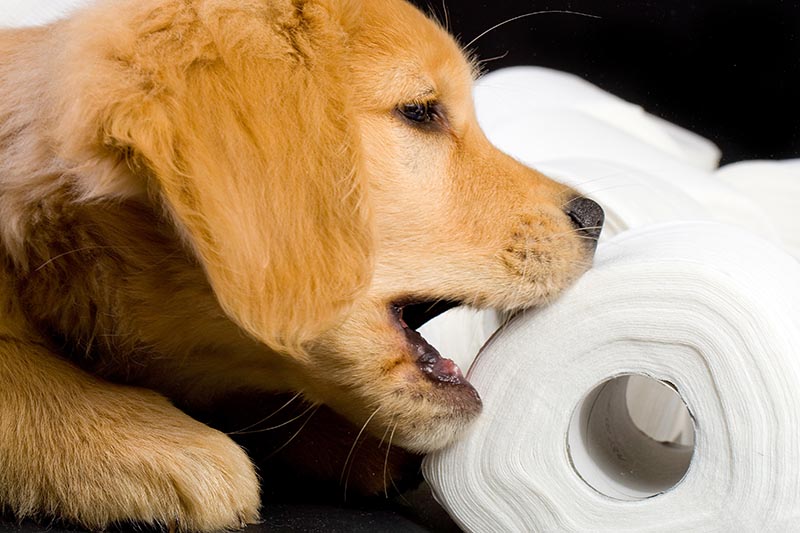

Call Your Vet
If your dog is eating tissues, we want to recommend getting in touch with your vet. Even though this behavior is likely harmless and easy to deter, it can signal a potentially bigger issue.
Explain to your vet how much your dog consumed and how often they have been eating this non-food item. Your vet might want to see them in person for examinations or imaging.
They can also give you first-hand advice on your particular situation, gathering necessary details along the way. So, if you have any major health concerns whatsoever, they should be your first point of contact.
If you need to speak with a vet but can't get to one, head over to PangoVet. It's an online service where you can talk to a vet online and get the personalized advice you need for your pet — all at an affordable price!
Examine Environmental Factors
If this becomes problematic, it’s time to examine the underlying cause. First, your veterinarian will likely ask you about the environmental triggers that could worsen or exemplify the problem. Here are a few questions you might want to think about.
- How much exercise does your dog get?
- Does the dog get a fair amount of attention?
- Does the dog exhibit traits of separation anxiety?
- Does your dog have a well-balanced diet?
- What types of dog food are you feeding the dog?
- How much per day based on their weight?
- Does the dog have a consistent daily routine?
- Is the dog chewing up any other items around the home?

Are Paper Products Dangerous to Dogs?
So your dogs are eating tissues. Is this toxic to them? While it might not be life-threatening, it can pose several health concerns.
Gastrointestinal Blockages
The first is gastrointestinal obstructions.
If your dog is eating a copious amount of tissues, they can get lodged in the gastrointestinal tract as they do not break up properly or digest the way that food does. Much like you should never put tissues into a toilet, as it could back up the plumbing, the same is true for a bodily system.
So, if your dog ate a bit, it can be quite hard for them to pass. Your vet might have to perform imaging; in serious cases, it might even require surgery.
These surgeries can be costly and typically happen with partial or full bowel obstructions. While it is unlikely that your dog will eat enough tissues to create this particular issue, it is certainly possible, depending on their size.
Gastrointestinal Upset
Tissues certainly aren’t food. So at the very least, tissues can upset your dog’s stomach. They might have difficulty passing this non-food substance, which can lead to vomiting, diarrhea, straining when they poop, or even constipation.
If they ate only a few tissues, this should pass pretty quickly in most medium and large-sized dogs, but it can be uncomfortable while it lasts.

Conclusion
The bottom line is that your dog shouldn’t be eating tissues. But that is probably a no-brainer for you as a dog owner. If your dog ate a few tissues, they might suffer from a little gastrointestinal upset, but it should otherwise be fine.
If they ate a copious amount of tissues, however, it could cause some serious gastrointestinal problems or a blockage. It can also signal underlying health conditions such as pica. Your vet should always be your first point of contact. So feel free to call and get their guidance on approaching this situation.
See Also:
- Why Does My Dog Eat My Hair? Common Reasons
- My Dog Ate Aquaphor: Should I Be Worried? Our Vet Takes a Look
Featured Image Credit: Muk Photo, Shutterstock



